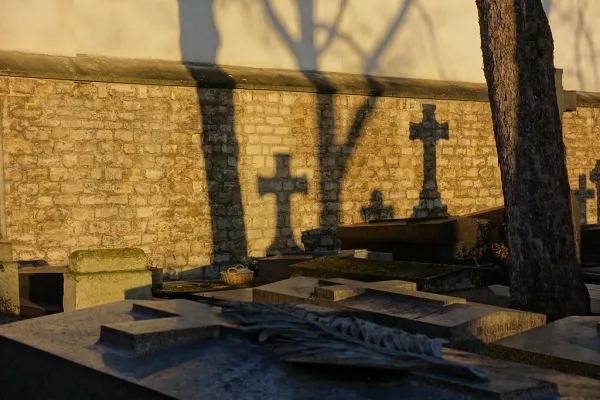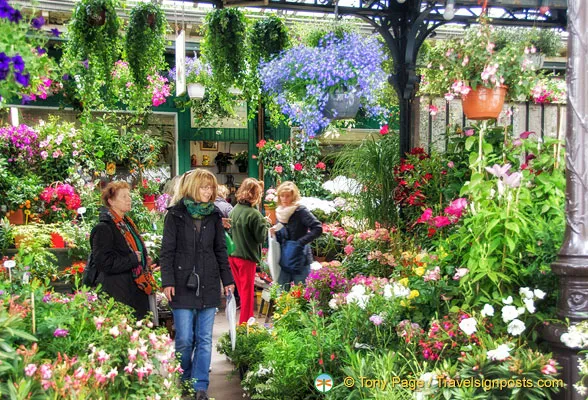 cemetery in Paris, anyone? Many people think, oh, Père Lachaise, with its 70,000 tombs, many of which contain notable figures such as Chopin and the Doors’, Jim Morrison, to name a very few. The name translates to Father Chair, or Father François d’ Aix de La Chaise, who heard the confessions of King Louise XIV. But, this is not our cemetery for today. We are headed to the Cemetery Montparnasse.
cemetery in Paris, anyone? Many people think, oh, Père Lachaise, with its 70,000 tombs, many of which contain notable figures such as Chopin and the Doors’, Jim Morrison, to name a very few. The name translates to Father Chair, or Father François d’ Aix de La Chaise, who heard the confessions of King Louise XIV. But, this is not our cemetery for today. We are headed to the Cemetery Montparnasse.
CEMETERY MONPARNASSE
In the bustling 14th arrondissement, a beautiful park-like cemetery awaits. Half the number of tombs of Père Lachaise, this cemetery houses a variety of the defunct, including the elite among artists and thinkers, as well as important political figures and Jewish figures, not to mention a surprising number of Americans. And, wait for it: Samuel Beckett is buried here, our esteemed author of Waiting for Godot.

Cemetery Vibe
ASIDE
Reader: Where does the mountain or “mont” come from in Montparnasse?
Me: Well, it is an artificial mont, made from the remains of a nearby quarry that was heaved up here. In the 17th century, the literary students danced on the top of this hill, and so the area came to be known as Montparnasse, after the Greek Mount Parnassus.
HISTORY
Perhaps it is no surprise that with an origin like this, Montparnasse would become a so-called “hotbed” of artists and all the mayhem that goes along with that. In the 1800’s that is. And then, fast-forward to the 1920’s and they were all there: Jean Cocteau, Salvador Dali, Degas, and a young Beckett (he was born in 1906). Cézanne lived near the old Montparnasse station, although he went to Montmartre to paint. After WWII, though, the artistic exuberance faded away and Montparnasse became a more staid financial sector, with an enormous metro station called Montparnasse-Bienvenue (Montparnasse-Welcome), with connections to all the trains, superfast, fast, in-town metro, and trains to the suburbs—all of which were at one time or another on strike in March of 2023, when I happened to want to use them.

Montparnasse Vibe in its Heyday
PILGRIMAGE
On my recent visit to Paris, my intrepid Irish friend and I took off one morning from the Marias by foot. We were on our way to the Cimetière Montparnasse. She was an excellent guide, so we’d take some fresh air and then the metro to pay our homage and our gratitude to Samuel Beckett. My friend is Irish and I am “French” so to speak, so we made a good pair.
One foot out the door, and we were almost blown off those feet by which we had intended to walk. “It’s so windy! How about we do this tomorrow?” I said. “Oh, it’s just a puff of air,” my friend said. Onward!

On our way to the metro, and not far from Notre Dame, we passed right through the Marché aux Fleurs et aux Oiseaux (Market of Birds and Flowers), one of the oldest markets in Paris. Queen Elizabeth has been added to the title in honor of her visit in 2014. So it is now officially called Marché aux Fleurs Reine Elizabeth II. (I have never heard it called that in my life, so just remember flowers and birds.)

Marché aux Fleurs et aux Oiseaux (+ Queen)
A hidden gem, filled with tiny stores offering various flowers and well, birds, it is a paradise. One store had orchids galore, in every color you can imagine. The orchid is a much beloved flower in France. Orchids were the stars at another garden, Le Jardin des Plantes, this year, which celebrated its tenth anniversary of orchids. Here at this marché, stores offered herbs, plants for the garden, plants for the balcony, plants for the terrace. Wind chimes with different tonalities whipped around in the breeze that was our companion that day. My friend found the prettiest candles, and we packed up a few for presents. Sundays are the days for birds: parrots, budgies, even rabbits and hamsters would be on display. A glorious cacophony, although too many caged creatures.

THE CEMETERY AWAITS
We found the metro, and after a short ride we only had a block or two to walk. Way off, where the street dead-ended, we could see the dark entrance gate. It seemed to be closed. When we arrived, indeed, the gate was firmly shut and locked. This can’t be, I thought, so I knocked on the gate. A uniformed man opened the gate a crack. “I am so sorry,” he said in French. The cemetery is closed because of the wind. “Could you make an exception?” my Irish friend asked. “Non, madame.” He looked horrified. Exceptions are not to be made. Think of the safety of the public. Branches might tumble on their heads. France, it turns out, has a lower wind emergency threshold than Ireland, which goes to show, well, something.

Nope!
GODOT
It only stands to reason that we would have to wait. The true pilgrim on his or her way to visit the author of Waiting for Godot could expect no less than to wait. The existential condition of waiting surrounds Beckett like a vapor, an aroma that has now blanketed the whole of the cemetery. When we asked if the cemetery would be open tomorrow, the guard, in good Vladimir fashion, shrugged. Perhaps tomorrow. Perhaps not. We shall see.